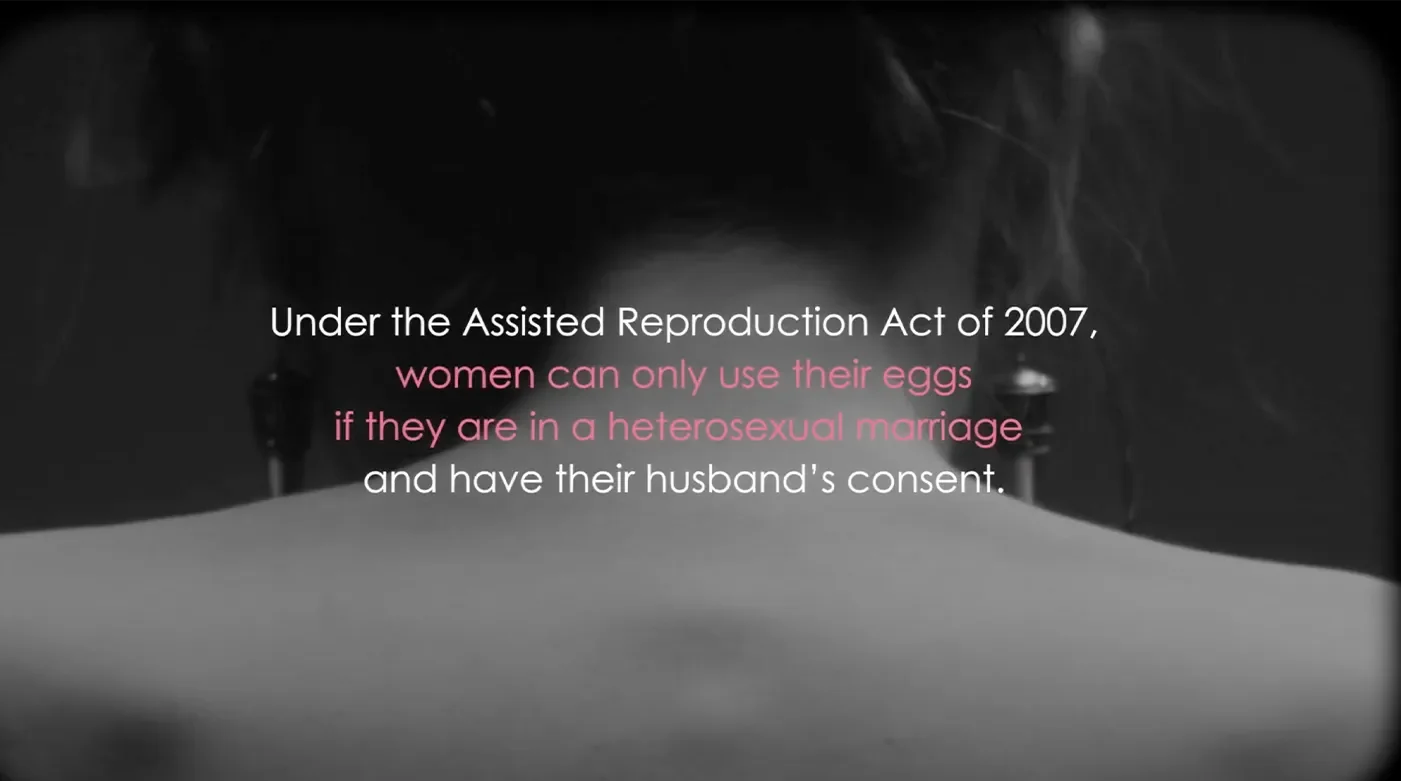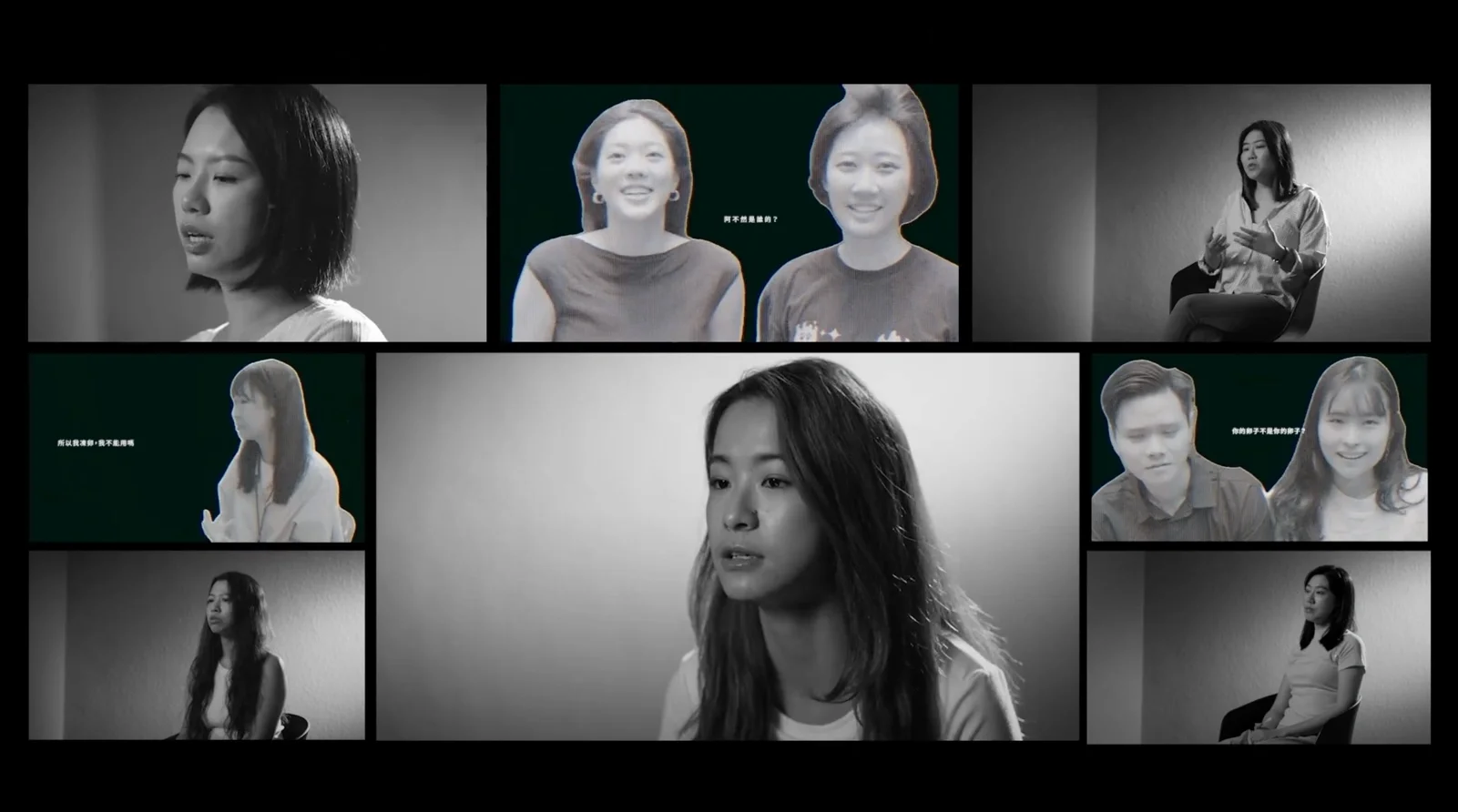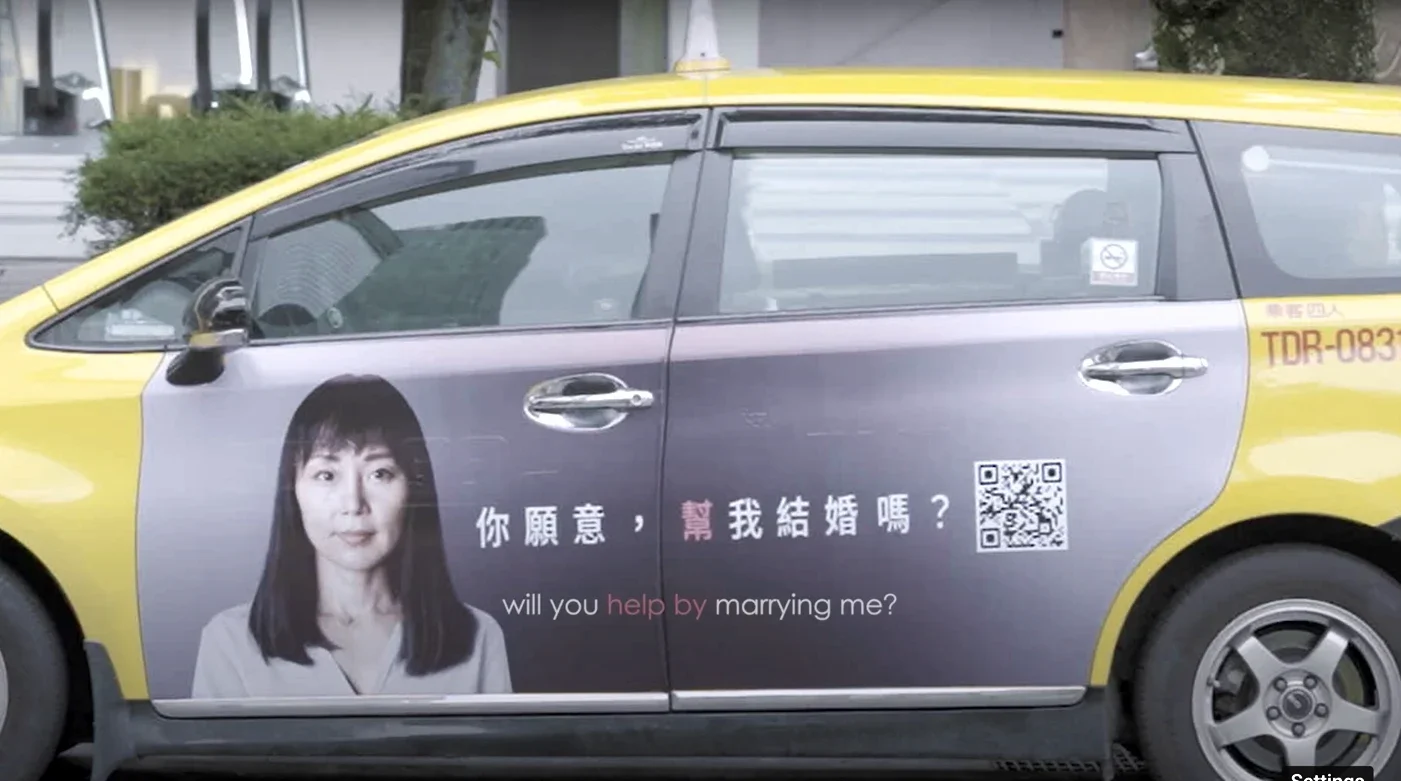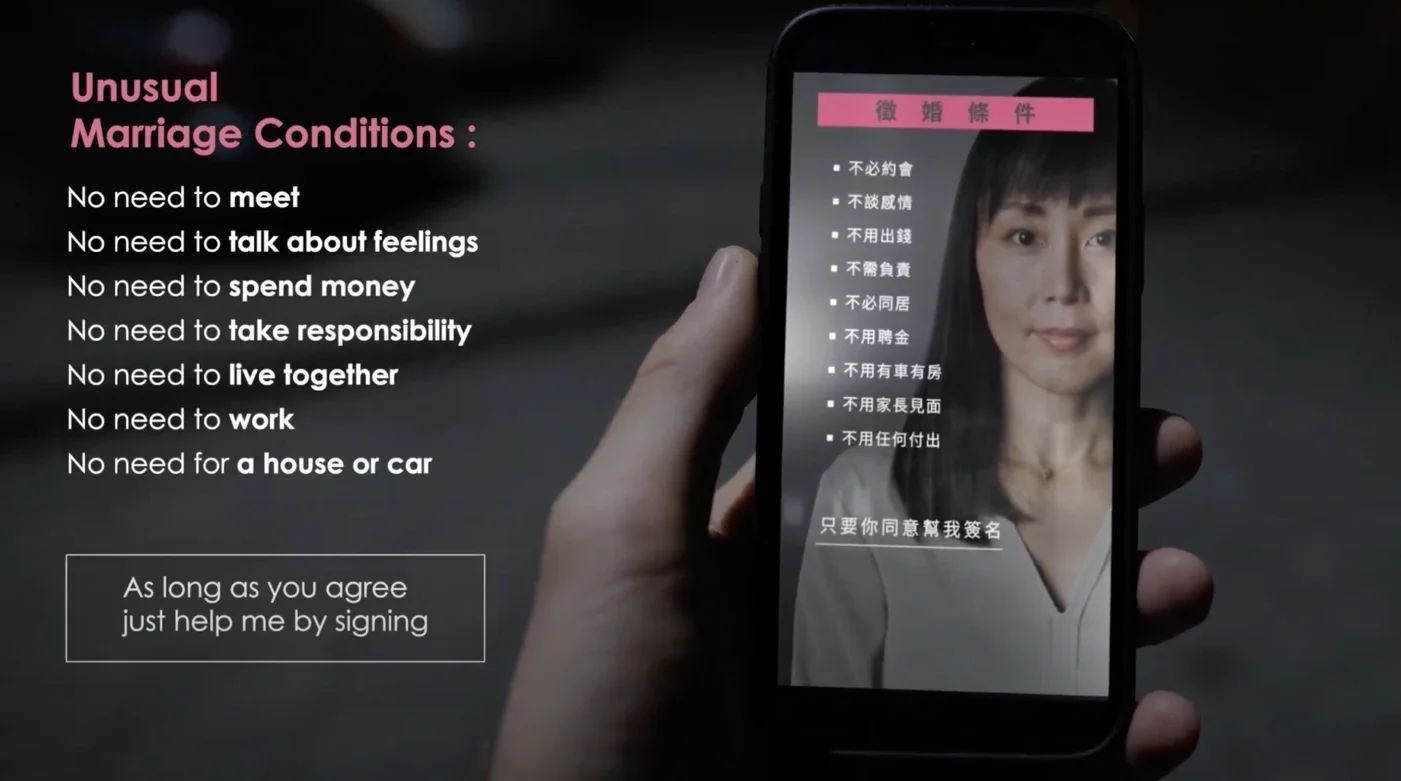This article was originally published on Branding in Asia.
Following its recognition at Cannes Lions and other award shows, ‘Unfreeze My Rights’ has stood out not only for its tangible social impact on a critically important issue but also for its creativity.
The campaign, created by dentsu Taiwan in partnership with the Awakening Foundation, spotlighted a discriminatory law that denied unmarried women and women in same-sex marriages the right to access their own frozen eggs.
On Mother’s Day, the issue was brought into the public eye through a striking public action: a woman searching for a husband in Taipei—not for love, but for the legal signature required to reclaim her reproductive autonomy.
The campaign, amplified with QR codes and digital petitions, sparked a wave of personal testimonies, drew national media attention, and prompted lawmakers to draft an amendment to the law.

To learn more about this powerful campaign, we spoke with Alice Chou, Chief Creative Officer at dentsu Creative Taiwan, about how the idea came to life, the balance between provocation and sensitivity, and what it reveals about creativity’s role in shaping public discourse.
What first brought the issue of restrictive egg freezing laws to your attention? How did the partnership with the Awakening Foundation take shape, and what were the most pressing challenges you identified at the outset?
A young colleague shared something that stopped us in our tracks: in Taiwan, women who freeze their eggs must be married – and get their husband’s consent – before they can use them.
This law hasn’t changed since 2007. It feels like a woman’s own body isn’t truly her own. That’s painful. Even the men around us were shocked. What’s worse is how many women didn’t know this rule. We realized that this silence had to end.
The campaign centers on a provocative public stunt—a marriage proposal on Mother’s Day. How did this idea evolve, and how did you balance the need to shock and provoke with cultural sensitivities and the risk of backlash?
In Taiwan, more women than ever are choosing to freeze their eggs, keeping the door open to future motherhood. But few realize a stark truth. Over 80% of these women are unaware that, by law, they must be married – and have their husband’s consent – before they can use their own eggs.
This contradiction sparked us to create a bold, attention-grabbing public campaign to ignite social discussion and pressure lawmakers for change.
On Mother’s Day, we staged a “Husband Wanted” campaign: a public appeal from a single woman seeking a husband who asked for nothing, except his signature of consent.
The symbolism was powerful: the law restricts a woman’s right to make decisions about her own body. And Mother’s Day, a celebration of motherhood, became a rallying cry for justice.
Changing a law means changing minds – and that’s harder when the topic is taboo.
We embraced controversy but respected cultural sensitivities and social feedback. Working closely with the Awakening Foundation, interviewing real egg-freezing women and undergoing extensive training, we deeply understood the issue’s complexity.
Every story, visual design, and advocacy action – including QR code links – was carefully vetted by legal, PR, and expert teams to ensure empathy and avoid inflaming conflict.
Changing a law means changing minds – and that’s harder when the topic is taboo. Fertility is deeply personal, and in Taiwan, public discussion is rare. We had to strike a delicate balance: be bold enough to spark conversation, but sensitive enough to avoid alienating people.
What role did real stories and personal testimonies play in shaping the campaign narrative? How did you source and integrate these voices?
Egg freezing is deeply personal, and often, deeply private. Most women choose silence. Which is why so few truly understand the laws – or the discrimination – behind them. We believed these real stories needed to be seen, heard, and understood.
With the support of the Awakening Foundation and the help of friends and allies, we invited more than a dozen women directly affected by the law to speak out. To break the silence. To let the world hear their anger, their pain, and their truth.

In a society still conservative about women’s reproductive rights, their courage was extraordinary. Whether they chose to remain anonymous or appear on camera, each voice was a step toward awareness and change.
The Foundation captured their stories in a film, and we sent them directly to lawmakers, so they could see, unfiltered, how these laws shape real lives.
And for the first time, this issue began to surface in public conversations online. It was a small but powerful step, pushing justice, long delayed, one step closer.
The QR code activation and digital petition platform were central to public engagement. What was the thinking behind this multi-channel approach, and what did you learn from the response?
From the beginning, we had two missions.
First: to make people see the law for what it is – outdated, unfair, and a violation of women’s autonomy. Second: to convert that awareness into tangible pressure for change.
To spark awareness
We invited women to tell their own stories. We took those stories to the streets with a bold idea: fake marriage, real advocacy.
One sign read, “Will you help by marrying me?” No conditions. Just a signature. A QR code told the rest of the story – the absurd truth that in Taiwan, a woman must be married, and her husband must agree, to use her own frozen eggs.

It made people stop. Feel. Share. The buzz spread across media and social platforms.
To drive legal reform
But awareness wasn’t enough. The QR code led people to a petition. Those signatures became more than numbers – they became voices lawmakers couldn’t ignore. We sent real video stories from real women straight to the people who could change the law.
When you tell the truth with courage and humanity, it travels. It connects. And it moves the world forward.
And it worked. The Ministry of Health submitted a draft amendment to restore egg autonomy to single women and same-sex couples.
One scan. One spark. One step closer to justice.
What I learned? When you tell the truth with courage and humanity, it travels. It connects. And it moves the world forward.
As momentum built, how did you work to sustain pressure on policymakers and keep the conversation going on this important issue?
We knew this was a sensitive topic. So we didn’t try to overwhelm people with mass messaging. We lit sparks instead – unexpected moments that set off ripples.
Brave women shared their stories online, breaking years of silence. On Mother’s Day, our Fake Marriage, Real Advocacy street action turned curiosity into connection, and connection into a story that spread fast.
We knew this was a sensitive topic. So we didn’t try to overwhelm people with mass messaging. We lit sparks instead – unexpected moments that set off ripples.
Soon, hundreds of influencers joined in. Over 100 YouTubers spoke out. Major news outlets covered it. Corporate partners stood beside us.
The goal was 5,000 petition signatures in a month. We tripled it in 4 days.
And the pressure worked – the Ministry of Health submitted a draft amendment to restore egg autonomy to single women and same-sex couples.
When enough voices speak the same truth, even the law listens.

What surprised you most about the public or media reaction? Were there any moments that made you realize the campaign was having a real impact?
What surprised me most was the speed. In just one week, participation tripled the foundation’s goal.
Even our clients never imagined that such a niche, sensitive issue could ignite a nationwide debate – and push the government to act.
Then the messages came. Not just concern, but anger. Determination. Voices that refused to be silenced.
As creatives, we felt proud. Not because of the coverage, but because we knew this was real.
It spread beyond social media. Major news outlets called. Lawmakers reached out. Support even came from overseas.
As creatives, we felt proud. Not because of the coverage, but because we knew this was real.
The anger that once burned quietly in a small meeting room was finally heard by the world.
What were the biggest hurdles to driving legislative change—and what can other creatives learn from this experience?
Changing the law isn’t just about policy – it’s about people.
The hardest part wasn’t technical. It was creating empathy between sides that disagreed.
The campaign looked bold. But it was grounded in careful preparation. We anticipated backlash and planned for it.
Before we acted, the Foundation brought us face-to-face with women living under this law, and opened public discussions on egg freezing. We learned to listen first, then create, shaping ideas and language that respected every perspective.
The campaign looked bold. But it was grounded in careful preparation. We anticipated backlash and planned for it.
Because anger alone changes nothing. Understanding changes everything.
In general, have brands in Taiwan become more willing to take creative risks, and how do you encourage clients to embrace bolder ideas?
In Taiwan, brands are opening to creative risk. The market moves fast, and only bold ideas stand out.
But risk still meets caution. Fear of failure runs deep.
So I don’t sell “risk.” I tell stories. I show how bold ideas are not gambles, but smart investments in relevance and emotion. We ground them in data. We prototype. We test. We make the leap feel safe.
Because real growth doesn’t come from playing it safe – it comes from the courage to matter.



